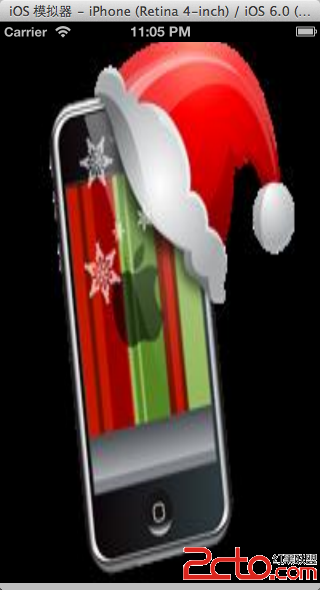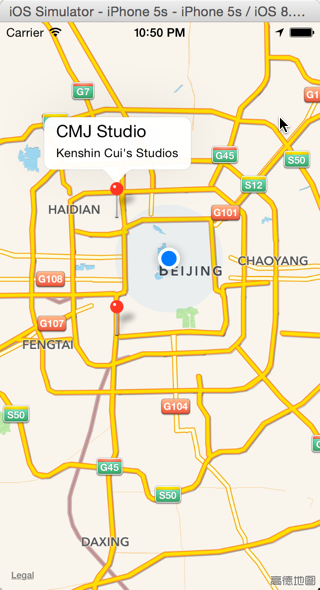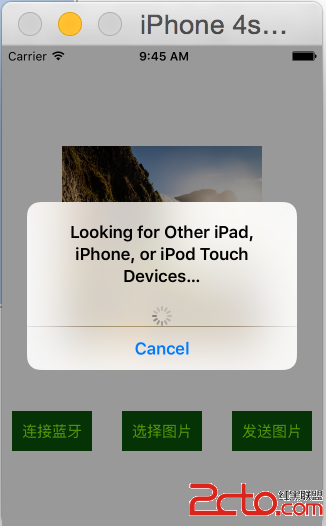iOS若何獲得手機的Mac地址
編輯:IOS開發綜合
起首解釋下,上面兩種辦法都可以取得手機的mac地址,然則有個限制,是在IOS7以下才可以取得。IOS7今後蘋果關於sysctl和ioctl停止了技巧處置,MAC地址前往的都是02:00:00:00:00:00。
官方文檔上如許寫的:
"Twolow-level.networking APIs that used to return a MAC address now return thefixed value 02:00:00:00:00:00. The APIs in question are sysctl.net_RT_IFLIST) and ioctl(SIOCGIFCONF). Developers using the value of the MAC address should migrate toidentifiers such as -[UIDevice identifierForVendor].This change affects all apps running on IOS 7”。
所以在iOS7今後想要獲得裝備的獨一標示Mac地址曾經不可了,只能用其他的取代。
上面說下兩種方法:
都須要導入幾個頭文件
#include <sys/sysctl.h> #include <.net/if.h> #include <net/if_dl.h>
辦法1:
// Return the local MAC addy
// Courtesy of FreeBSD hackers email list
// Accidentally munged during previous update. Fixed thanks to mlamb.
- (NSString *) macaddress
{
int mib[6];
size_t len;
char *buf;
unsigned char *ptr;
struct if_msghdr *ifm;
struct sockaddr_dl *sdl;
mib[0] = CTL_NET;
mib[1] = AF_ROUTE;
mib[2] = 0;
mib[3] = AF_LINK;
mib[4] = NET_RT_IFLIST;
if ((mib[5] = if_nametoindex("en0")) == 0) {
printf("Error: if_nametoindex error/n");
return NULL;
}
if (sysctl(mib, 6, NULL, &len, NULL, 0) < 0) {
printf("Error: sysctl, take 1/n");
return NULL;
}
if ((buf = malloc(len)) == NULL) {
printf("Could not allocate memory. error!/n");
return NULL;
}
if (sysctl(mib, 6, buf, &len, NULL, 0) < 0) {
printf("Error: sysctl, take 2");
return NULL;
}
ifm = (struct if_msghdr *)buf;
sdl = (struct sockaddr_dl *)(ifm + 1);
ptr = (unsigned char *)LLADDR(sdl);
NSString *outstring = [NSString stringWithFormat:@"%02x:%02x:%02x:%02x:%02x:%02x", *ptr, *(ptr+1), *(ptr+2), *(ptr+3), *(ptr+4), *(ptr+5)];
// NSString *outstring = [NSString stringWithFormat:@"%02x%02x%02x%02x%02x%02x", *ptr, *(ptr+1), *(ptr+2), *(ptr+3), *(ptr+4), *(ptr+5)];
NSLog(@"outString:%@", outstring);
free(buf);
return [outstring uppercaseString];
}
辦法2:
- (NSString *)getMacAddress
{
int mgmtInfoBase[6];
char *msgBuffer = NULL;
size_t length;
unsigned char macAddress[6];
struct if_msghdr *interfaceMsgStruct;
struct sockaddr_dl *socketStruct;
NSString *errorFlag = NULL;
// Setup the management Information Base (mib)
mgmtInfoBase[0] = CTL_NET; // Request network subsystem
mgmtInfoBase[1] = AF_ROUTE; // Routing table info
mgmtInfoBase[2] = 0;
mgmtInfoBase[3] = AF_LINK; // Request link layer information
mgmtInfoBase[4] = NET_RT_IFLIST; // Request all configured interfaces
// With all configured interfaces requested, get handle index
if ((mgmtInfoBase[5] = if_nametoindex("en0")) == 0)
errorFlag = @"if_nametoindex failure";
else
{
// Get the size of the data available (store in len)
if (sysctl(mgmtInfoBase, 6, NULL, &length, NULL, 0) < 0)
errorFlag = @"sysctl mgmtInfoBase failure";
else
{
// Alloc memory based on above call
if ((msgBuffer = malloc(length)) == NULL)
errorFlag = @"buffer allocation failure";
else
{
// Get system information, store in buffer
if (sysctl(mgmtInfoBase, 6, msgBuffer, &length, NULL, 0) < 0)
errorFlag = @"sysctl msgBuffer failure";
}
}
}
// Befor going any further...
if (errorFlag != NULL)
{
NSLog(@"Error: %@", errorFlag);
return errorFlag;
}
// Map msgbuffer to interface message structure
interfaceMsgStruct = (struct if_msghdr *) msgBuffer;
// Map to link-level socket structure
socketStruct = (struct sockaddr_dl *) (interfaceMsgStruct + 1);
// Copy link layer address data in socket structure to an array
memcpy(&macAddress, socketStruct->sdl_data + socketStruct->sdl_nlen, 6);
// Read from char array into a string object, into traditional Mac address format
NSString *macAddressString = [NSString stringWithFormat:@"%02x:%02x:%02x:%02x:%02x:%02x",
macAddress[0], macAddress[1], macAddress[2],
macAddress[3], macAddress[4], macAddress[5]];
NSLog(@"Mac Address: %@", macAddressString);
// Release the buffer memory
free(msgBuffer);
return macAddressString;
}
以上就是iOS獲得手機的Mac地址的兩種辦法,願望對年夜家的進修有所贊助。
【iOS若何獲得手機的Mac地址】的相關資料介紹到這裡,希望對您有所幫助! 提示:不會對讀者因本文所帶來的任何損失負責。如果您支持就請把本站添加至收藏夾哦!
- 上一頁:iOS開辟之手勢辨認
- 下一頁:iOS開辟之活動事宜和長途掌握
相關文章
+



